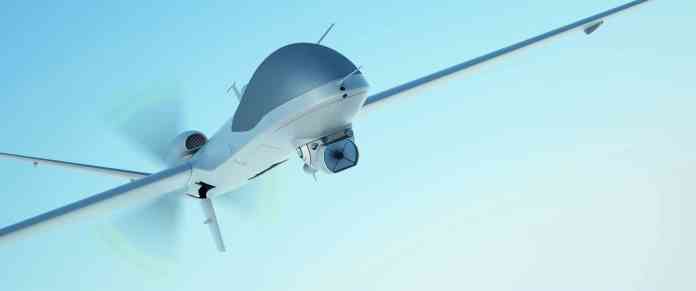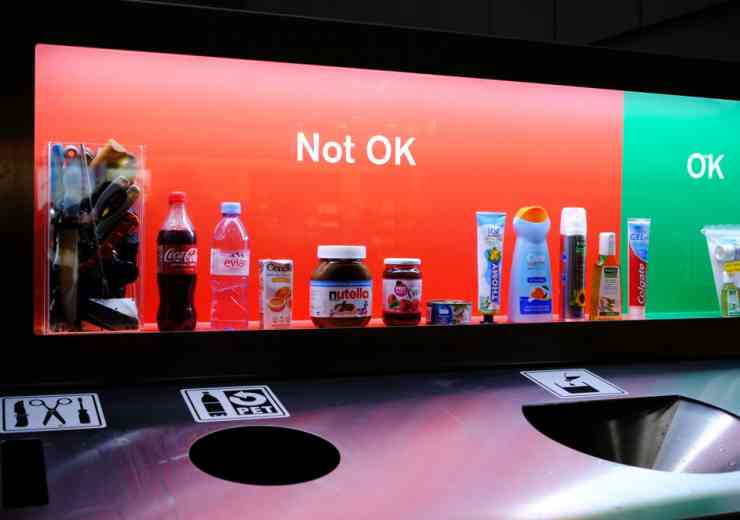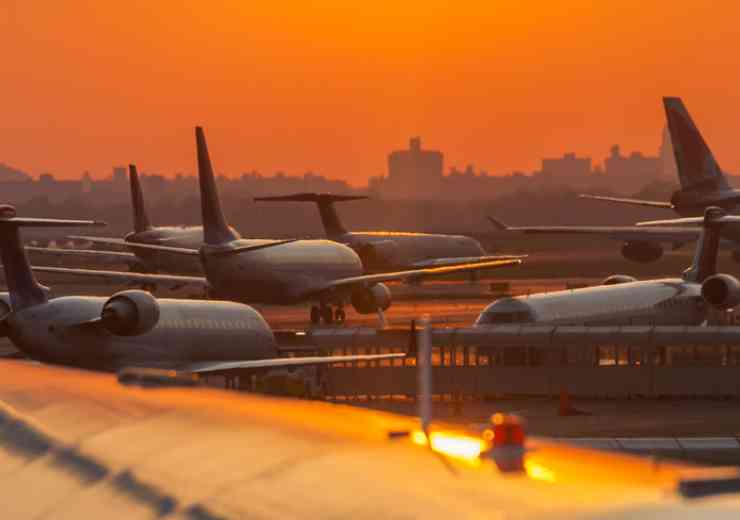
Would stricter ‘drone’ regulations help security?
Gary Clayton, of the Unmanned Aerial Vehicle Systems Association, addresses current regulation of the UAV industry and whether the speed of technology advances is helping security services
This is the second article in a series about Unmanned Aerial Vehicles (UAVs), Remotely Piloted Aircraft Systems (RPAS) or even ‘Drones’, as they have unfortunately become known, where we explore the moral and philosophical debate around their introduction in to every aspect of daily life and how this helps or hinders law enforcement.
The first article entitled ‘Drones - a tool for both sides in the race’ (Counter Terror Business 24) explored whether the security services had the same opportunity to use the advances in unmanned technology and analysis of the data collected as the terrorist. It also explored if the technology was responsible for the intentions of the user. This article attempts to widen the debate in to what could be, should be, will be, and is being done to address regulation of the industry and if this will help balance the situation explored previously.
We all too often see headline stories of ‘Drones’ hitting aircraft at London Heathrow Airport but nobody finds the small retrospective insight, placed on the inner pages, passing comment that no evidence of a ‘Drone’ was found and the pilot that reported it was mistaken. When ‘Drones’ are involved in an incident it is important to ask whether it is a recreational user out of control or a terrorist with intent – friend or foe? The problem is that the law enforcement officers can’t determine the intent at the time of the incident and it is only later that the pundits debate the facts utilising their customary 20/20 hindsight. The problem is that the outcome could have the same devastating effect despite differing initial user intent.
New drones
Regulation can never keep up with the technology. New ‘Drones’ are released on to the market every day with more and more capability. Research projects are pushing the boundaries and the limitations initially posed by Visual and Radio Line of Sight (VLOS and RLOS) are being challenged. Operators of small ‘Drones’ want to fly faster and further and the possibility of on-board video processing and decision making has fuelled a relentless drive to more and more autonomy. The availability of modern communications makes connectivity within the urban environment possible meaning the RLOS is not an issue and image processing has provided autonomous navigation and sense and avoid technology meaning that VLOS is not an issue.
However this brings an interesting paradox. Present legislation/regulation restricts flight in the urban environment whereas flight in the country environment is far less restricted. However as we have seen it is in the urban areas that future systems will be safer and able to maintain communications compared with the rural environment where RLOS and VLOS will continue to restrict activities. However all this will change and ‘Drone’ flight in the urban environment will become commonplace. I’m not even sure if pilots will be involved, or even allowed, for this explosion of urban activity but I feel confident that in the rural environment pilots will be necessary and desirable. I see that the tasks undertaken will be different with delivery, measurement and monitoring in urban areas to mapping, and observation in the countryside. The question is how will this brave new world be controlled and how will law enforcement agencies determine friend or foe quickly and accurately?
The European Commission convened a conference in Riga in 2014 which filled me with optimism and hope. I travelled home sure that the industry had taken a big step to a safer future, and moreover, I was proud that I had been invited there to witness it. There was talk of a European CE mark centred on technical compliance rather than build quality. For a device to be sold in the European Union it would have to have a registration that could be interrogated remotely, ‘Drones’ were to be registered to the user, a geo-fencing solution was to be compulsory, computer based user training would be necessary before a ‘Drone’ would be activated, and there were many more. This was a comprehensive set of mutually consistent measures designed to restrict flight to allowed areas, educate the operators and build public confidence. Riga also debated that, with the technical measures in place, the regulation could then be updated to a risk based rather than the weight based, one size fits all, philosophy that existed at the time.
One statement that still rings loudly on my conscience is: “[with the technical measures in place] regulation should not be a block to innovation and no regulation should be introduced for regulations sake.”
With the knowledge that the recreational user could not fly in restricted areas, that they would have registered the air vehicle and proven their understanding of the regulations - and therefore the owner could be traced - meant that the regulations for the smaller systems could be relaxed. This is a perfectly reasonable assumption and mirrors (close enough for the sake of argument) that of the automotive industry – you learn to drive, you pass a test, buy a vehicle which has performance limitations imposed by the manufacturer, register it with the authorities, insure it and finally start to drive safely along city streets and country lanes with everybody else. However reality has taken another turn.
The European Aviation Safety Agency (EASA) is changing the regulations without any of the prerequisite technical measures being in place. In the UK; the Civil Aviation Authority (CAA), the body responsible for setting and enforcing all UK national aviation regulations, didn’t want to be left behind and started opening up the regulations with an updated issue of CAP722, the CAA UAS guidance/regulation, with little or no consultation in March 2015. There were a number of reasons given by the CAA for this course of action and even more suspected by the industry. However the CAA did state, at a National Air Traffic Management Advisory Council (NATMAC) meeting earlier in the year, that the ‘UK aviation regulations will continue to be aligned with those of EASA irrespective of the Brexit vote’. This is an eminently sensible step but should we pre-empt EASA?
The challenges
A year ago I was asked by Air International magazine ‘what would you say are the key challenges facing the industry going forward?’ My response, published in October 2015, was: “Self-interest distorting the business, regulation or even public acceptance; EASA, ICAO, ITU, EUROCAE, JARUS regulation being tipped from the entirety to a particular interest; and that UAS are the ‘sexy topic’ of the day and newcomers to the industry are extremely welcome, but they often arrive with lots of energy and don’t take the time to research the topic. This can slew regulatory debate and with 2016 being such a pivotal year this poses a risk.”
I would have been delighted to look back at my miss-placed pessimism and declared that logic was in charge, decisions were being made in a rational way and that a systems approach to the new technology introduction was being taken – but I can’t! However, despite that, the technological advances do continue to excite me.
I see the goodwill, positive discussions and energy from the Riga conference being distorted and watered down in the interests of political expediency. Just because it is difficult it doesn’t mean we shouldn’t do it. It is not the introduction of technical measures themselves that are important but their inclusion brings two distinct and significant benefits. To the recreational user it would mean that they understand the airspace environment they are entering and that they cannot transgress their allowed operational areas and are therefore less likely to be prosecuted for an incident. Secondly, to the authorities it would mean that they have a clear and instant insight in to the fundamental security questions of friend or foe.
If a ‘Drone’ was somewhere it shouldn’t be then the geo-fencing will have been deliberately subverted, if it didn’t respond to a registration request it is unlikely to be on a legitimate task or have a registered user – its intentions can be assumed to be malicious and appropriate action taken. A clear decision concerning how to react can be taken.
Another confusing distinction is that training and CAA registration is only required if you are undertaking commercial activity but is not necessary for recreational use. That means that there is no training, no testing of individual capability and no knowledge of the airspace environment necessary for most of the ‘Drone’ owners in the UK. A BBC ‘Sky’s above Britain’ programme (Episode 2) aired this summer showed an ‘amateur’ that wanted to fly a ‘Drone’ around London. He was informed that he needed training and that regulations applied. Despite his amazement he then underwent basic training and achieved a basic licence, even though the programme left out the class room training elements, and emphasised that this was still not enough to fly in London. This was a laudable attempt to educate that there are regulations and restrictions that need to be understood - albeit through a small entertainment segment of a wider programme topic. The significance of this is that most people don’t know. The technical measure discussed at Riga would have meant that not only would you know that regulation applied but you will have demonstrated that you understand them before the vehicle (or hand held controller) would have been activated.
Risk regulations
Following Riga the regulators have decided to develop the regulations along the basis of risk. They have devised three categories; Open, Specific and Certified. The Open category applies to a vehicle and/or operation has little or no risk to people or property and has little or no regulation. This has limits on vehicle mass and guidelines as to distance, height and proximity to other people and property but other than that you can enjoy recreational activities. Conversely the Certified category means full compliance with EASA operational and design regulations, including airworthiness, that apply to any other type of aircraft of that size and weight – manned or unmanned. This category is primarily intended for the larger systems anticipated in the near future that will operate in national airspace alongside manned aviation and therefore the same rules apply.
Between these extremes is the Specific category. This is for operations that fall outside the limited restrictions of the Open category or for vehicle weights above the Open category limits. This change of regulation is sensible when built upon the foundation of the technical measures discussed but in isolation fail to make the situation safer. They also fail to help in the protection of sensitive sites such as airports, crowds/events, public buildings, as it does nothing to help the authorities in their plight to understand the intent of the user.
The numbers are becoming too large for the CAA to handle so the Open category is to be controlled by the Police and covers at least 95 per cent of all ‘Drone’ flights. Having planned, trained and practiced under the radar of the authorities a vehicle can just appear somewhere it shouldn’t be and do anything it wants. No one knows if it is a father losing control while playing with the kids on an adjacent piece of wasteland or a terrorist. Furthermore the police on the street are not clear of the regulations. The changes have been pushed through for expediency without the bigger picture, and certainly no consideration of the wider security consequences, being assessed. This is not a CAA issue. Yes they decided to move earlier than they needed to in order to manage the work load, but, the EASA consultation in 2015, and the EU draft regulation in consultation in Q4 or 2016 has signalled that the change is coming anyway.
In conclusion we must see hope that the Riga conference decided, at EC ministerial level, upon a holistic approach and proposed a comprehensive balanced set of technical and regulatory measures to take the introduction of this new technology in to the future. However although the regulatory changes are well underway there has been no sign of drafting the legislation necessary to introduce the technical measures needed to underpin them. The original vision would have finally introduced something to help the authorities but instead the present incomplete implementation makes the situation worse.
UAVS, the UK National Trade Association, will continue to support the regulators, the industry and the public as we chart our way through the situation in which we find ourselves. However in 10 years I’m optimistic that common sense will have prevailed, the situation will be back under control, we will have a complementary and balanced set of technical measures to underpin the regulations and as a consequence the authorities will have a clear method of determining risk.
Irrespective of the regulatory position and how long it takes to develop the balanced approach discussed; I do recommend that anyone buying a ‘Drone’ invests in a training course from a reputable supplier with an established track record (such as those listed on www.uavs.org/uastraining). You will not only learn how to fly but also airspace rules, regulations and how to remain safe.
digital issue




















